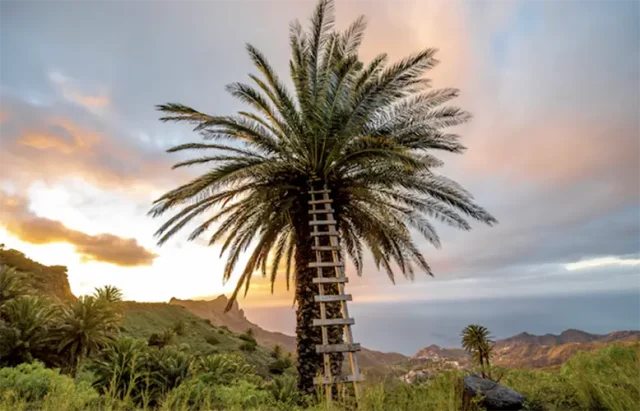
There’s never been a better time than now to visit La Gomera. There are plenty of attractions to explore, including natural wonders, black sand beaches, historic sites and more. If you’re here for the first time, this guide is here to help you out.
Garajonay National Park
One of the first attractions to see is Garajonay National Park. This UNESCO World Heritage Site is the perfect setting for a picnic in nature or cooling off in El Chorro de El Cedro, the island’s highest waterfall.
The park’s habitats are rich and diverse in flora and fauna, with plants and animals exclusive to the island. For example, the Rabiche and Turqué pigeons thrive by eating fruits of the laurel trees, making for great birdwatching opportunities.
La Gomera is also unique because it offers a choice of walks for all ages and abilities, and almost every one of them leads to incredible views.
Remarkable Lookouts
La Gomera is home to the world’s most spectacular landscapes, and lookout spots (miradors) provide the best views around. These viewpoints leave even the most well-traveled sightseers impressed.
Alto de Garajonay is the island’s highest point at an altitude of 1,487 m. It’s high enough to see almost the entire island on clear days. You might even be able to see the silhouettes of La Palma, El Hierro, Tenerife and Gran Canaria in the distance. On some summer evenings, the sun sets behind the ‘mar de nubes’, which translates into ‘sea of clouds’.
In southern La Gomera, Mirador de Igualero looks across the landscape of Orone. The main highlight is La Fortaleza, a tabletop-shaped mountain that was a sacred site of the island’s original inhabitants.
Charming Towns
While Garajonay National Park and miradors are must-sees, you’ll also want to catch a glimpse of the island’s traditional towns.
Valle Gran Rey is a delightful village in western La Gomera, notable for its pastel-coloured houses and terraced hillsides, or as the locals call it, ‘the walls of La Gomera’. You can also soak up the sun and cool off on beautiful black beaches nearby, such as Playa de Vueltas. The water is calm and protected from the wind, so it’s ideal for young children and watersports.
Another highlight is Vallehermoso, where you’ll come across scenes full of ravines and intense greenery. Traditional houses dot the palm groves, and you can buy local products from the town’s orchards. Circular routes throughout the valley lead to many other interesting places, such as Alojera, a pristine beach and the island’s main producer of palm honey.
Island Flavours
La Gomera’s dishes are based around local products such as palm honey, bread, cheese, fish and wine. Others come in the form of stews, sauces and soups like potaje de berros, a wholesome watercress soup served on wooden plates of juniper or holly. There is also a great variety of meat and fresh fish.
For cheese lovers, almogrote is too good to miss. It’s traditionally made by mixing mature hard cheese, garlic, pepper, chilies, tomatoes and olive oil into a chunky dip.
Wine enthusiasts will be pleased to try vintages from full-bodied whites to well-balanced reds. Some of the wines aren’t produced anywhere else in the world and are protected by the Guarantee of Origin, Vinos de La Gomera.
There’s a lot more for you to discover! Whether you want to visit authentic towns, watch a fantastic sunset or see nature in its wildest state, La Gomera welcomes you with open arms.
How to Get There
Fly into Tenerife and get a 50-minute ferry to La Gomera. A short flight from Tenerife will get you there as well.
Best Time to Visit
La Gomera is blessed with great weather all year round.
Currency/Language
Euros/Spanish. Many Gomerans also speak Silbo, a beautiful and ancient whistling language.
Learn more at lagomera.travel.





